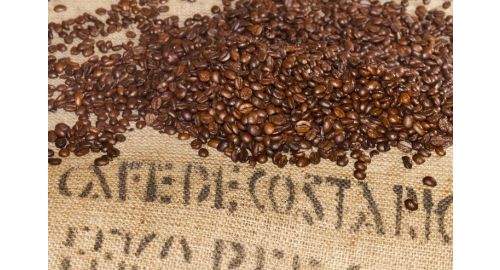As was the case for many of the countries who fell under Spanish rule, Costa Rica was starting to farm coffee for export as soon as the 17th century.
Soon, farmers in the microclimates of elevated zones -especially in the Central Valley- realized that coffee was very precious for exporting, and was up there with tobacco, cocoa and sugar in terms of demand and profitability.
In 1821, after Costa Rica gained independence from the Spanish kingdom, the government saw to it that coffee farmers had the best of conditions to work with. Coffee farmers of Costa Rica had, without a doubt, better quality of life than any other coffee farmer in the continent and, as a consequence of this, coffee quality and quantity grew exponentially.
But even with this, the fact remained that Costa Rica was a very small and relatively unknown country. It was difficult for exporters to successfully sell the coffee directly to the consumers - yet they found a solution in exporting the coffee they grew to Chile. The coffee was then sold to Europeans as South American coffee - which sounded more exotic, which made it easy to sell.
After 10 years of this bothersome process, a breakthrough came for coffee exporters: They secured a deal with a british customer - which made an extraordinary order of coffee directly to Costa Rica.
After this one deal, word spread rapidly amongst British companies that Costa Rican coffee was just as good if not better than South Coffee created its own economy which fueled life and prosperity into the rest of the country. Soon, coffee was being referred to as “the golden bean” because, well - it was almost like growing gold. Most of the land owners on which coffee was grown became rich in a matter of a couple of decades, creating a sort of aristocracy - a rich class who had nothing but coffee to thank for its wealth.
Coffee in the 20th century
The 20th century saw a lot of crises - economic ones brought about by many different factors. The first and second world wars made it very hard for Costa Rica to sell their coffee in its entirety and at the desired price for the duration of each war. So, the first half of the century proved to be a bumpy period for Costa Rican coffee - but it soon changed for the better.
In the 1950s, business was booming for coffee - particularly Central and South American coffee. Costa Rica was no exception, and coffee was flying off the shelves. This trend continued until demand was much more than the country was able to produce.
This situation which threatened a serious problem for coffee farmers in particular was quickly handled by the Costa Rican government, who knew very well the importance of the coffee industry for the country’s economy, and stepped in to help farmers.
The Costa Rican government poured money and effort into researching better and easier methods for producing coffee - until now, coffee had been grown in the same old way anything was grown, without really paying attention to the plant’s very specific needs.
The changes that came then went as far as changing the variety of the coffee plant itself - until now, most of the coffee grown had been Typica and Bourbon, which were not as productive as other varieties. This, along with other techniques for better farming and regular workshops with local farmers, resulted in the doubling of the country’s yearly harvest in just under two decades.
Colombia and Costa Rica: The coffee feud
If there is any other country were coffee has been such a significant part of the culture and economy, it is Colombia. For a long time, Colombia enjoyed the reputation of the best coffee in the whole region - Until the late 20th century.
With the coming of the third wave of coffee, quality was starting to be much more appreciated and talked about. It wasn’t such a simple thing anymore. Coffee exporters started minutiously comparing their coffee against their competitors, all trying to gain an edge.
It all happened in the early 2000s: Café Britt, the biggest coffee conglomerate in Costa Rica, was poking fun at their Colombian competitors by producing a series of T-shirts and license plates (among other merchandise) that said “Juan Valdez drinks costa rican coffee”.
For context, Juan Valdez is the personification of coffee in Colombia. He is the image you see so often of a mustachioed man with a hat, and a mule by his side. He was invented in the 20th century by Colombia to promote their coffee and give a face to the coffee industry.
So, this was their way of throwing shade at Colombians: The merchandise was sold in Costa Rica as well as in the US in the spanish-speaking communities, and soon word got out to Colombian coffee businesses. They were not pleased.
The National Federation of Coffee Growers of Colombia sued Café Britt in 2006, claiming that Juan Valdez was their intellectual property and that they were effectively profiting from their property. Things got a little hairy; Café Britt launched a countersuit and eventually it was settled by the latter recalling all of their products with the controversial slogan.
Coffee Culture in Costa Rica
What does Costa Rican coffee look like?
Like many other coffee drinking cultures in the region, the people of Costa Rica enjoy black coffee - often filtered through a cotton, specially made coffee sock that has been in used in the country since the 19th century.
Although black coffee -which is to say a coffee similar to drip coffee but a little stronger, more concentrated- is the traditional drink, Costa Rica enjoys the presence of a lot of big coffee chains like Starbucks.
Fortunately for its people, Costa Rica values good coffee a lot, and the government goes out of its way to keep costs relatively low. So, basically, most Costa Ricans can enjoy specialty-grade coffee for a very good price - nobody is ever short of coffee in Costa Rica.







